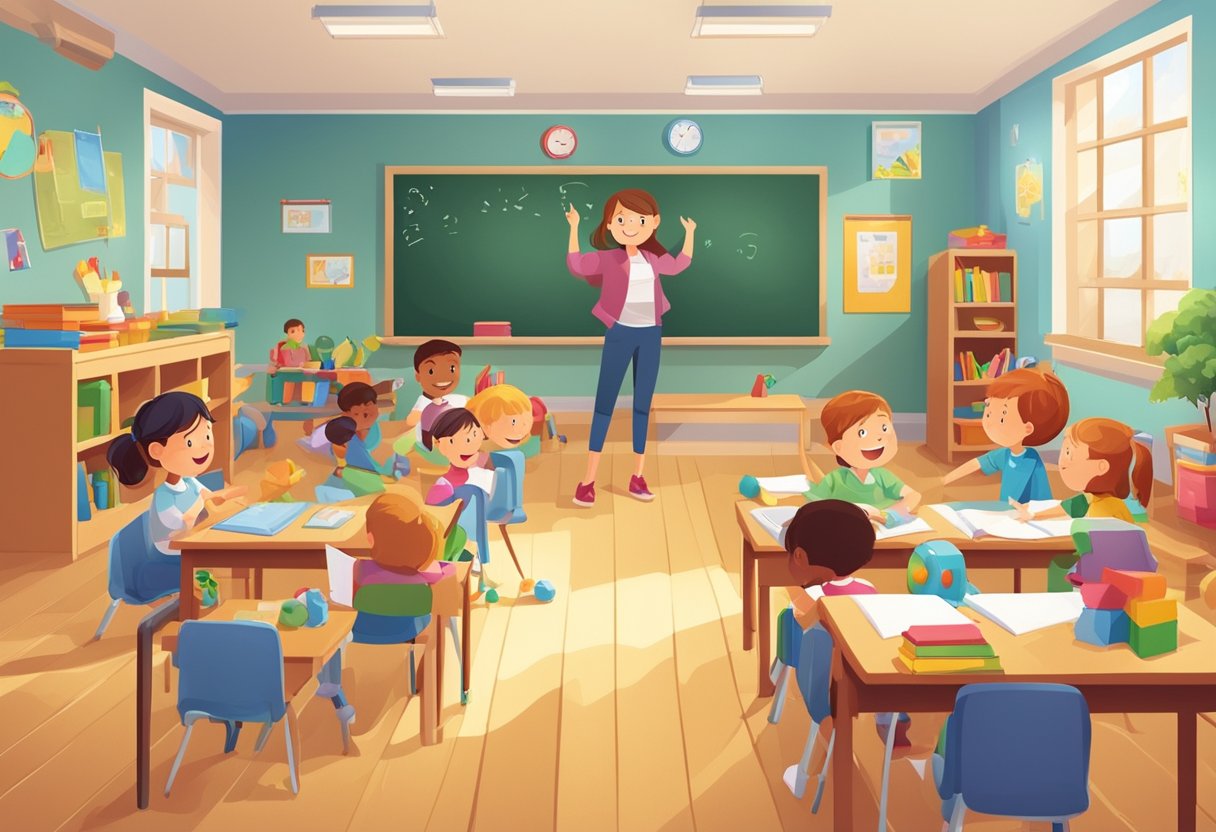Preschool and kindergarten mark the beginning of a child’s formal education, but they serve different roles in early childhood development. Preschool typically caters to children aged three to five and focuses on play-based learning. At this stage, children are introduced to social skills, basic alphabets, numbers, and self-exploration through creative activities. The environment is less structured compared to later educational settings, providing a space for children to develop their emotional and social aptitude alongside cognitive skills.
Kindergarten, on the other hand, is the transition phase between preschool and the formalized structure of elementary school. Children usually enter kindergarten at the age of five or six. Here, they encounter a more structured day with a focus on academic skills, including more advanced literacy and numeracy, alongside continued social development. The curriculum is designed to prepare children for the rigors of elementary school, with lessons crafted to enhance a child’s ability to focus, complete tasks, and follow a more defined schedule.
Defining Preschool and Kindergarten
Preschool refers to an early childhood education program for children below the age of formal education, typically ages 3 to 5. It is not mandatory and primarily focuses on play-based learning. Preschool is designed to develop basic interpersonal communication, social skills, and motor skills through interactive play. Its curriculum is generally less structured, fostering creativity and social development.
Kindergarten is the first year of formal education and typically serves children around 5 to 6 years old in countries like the US and Australia. It is more structured and academic than preschool, blending play with more formal learning activities. Kindergarten aims to prepare children for the educational requirements of primary school through a structured curriculum that includes foundational literacy and numeracy skills.
| Aspect | Preschool | Kindergarten |
|---|---|---|
| Age Group | 3 to 5 years | 5 to 6 years |
| Educational Stage | Early childhood education | Beginning of formal education |
| Curriculum Focus | Play-based, social skills, motor skills | Structured, literacy, numeracy, readiness for school |
| Structure | Informal education, less structured | Formal education, more structured |
| Programs | Montessori, community-based, various philosophies | Governed by educational standards |
| Mandate | Voluntary | Mandatory in many regions |
In the US and Australia, kindergarten marks the transition from early childhood education to the more rigorous learning environment of primary school. Montessori programs can be found in both preschool and kindergarten, emphasizing self-directed learning within a prepared environment. While preschool constitutes informal education, kindergarten is a critical step into the world of formal education.
Educational Approach and Curriculum

Preschool and kindergarten serve as critical stages in early childhood education, each offering unique approaches and curricula designed to foster development and prepare children for future academic success.
Learning Environment and Focus
Preschool education is characterized by a play-based learning environment where children are encouraged to explore and engage with their surroundings. The focus is often on social and emotional development, communication, and language skills, nurturing children’s natural curiosity and fostering a love for learning. Through hands-on activities, preschoolers learn to interact with their peers and develop problem-solving skills.
Kindergarten, meanwhile, introduces a more structured curriculum, balancing play with academic learning. Kindergarten curriculum aims at developing cognitive skills, reading, writing, and basic math. Kindergartens provide an environment that starts to resemble a traditional classroom setting, maintaining age-appropriate play while beginning to incorporate more formal education techniques.
Development of Core Skills
In preschool, core skill development is achieved through creative play and less structured activities. Essential skills such as vocabulary building, emotional development, and social skills are fostered in a relaxed environment. The curriculum is less about academic instruction and more about exploration and expressing creativity.
Conversely, the kindergarten curriculum is more deliberate in teaching academic skills, focusing on school readiness skills such as math, reading, and abstract thinking. Structured learning in kindergarten is designed to develop foundational skills in a stepwise manner, preparing children for the transition to more advanced school years.
Readiness for the Next Educational Stage
Preschool sets the foundation for early childhood education by instilling a sense of excitement for learning. It emphasizes emotional development and social skills, which are critical for a smooth transition into more academic settings.
Kindergarten acts as a bridge between early childhood education and elementary school, honing school readiness skills. Kindergarten readiness includes a grasp on basic academic skills and the ability to adapt to a more structured learning environment, ensuring that children are prepared for the academic expectations of first grade and beyond.
Age and Developmental Considerations

Choosing between preschool and kindergarten is often influenced by a child’s age and developmental stage. Understanding these factors is crucial for parents to make an informed decision that aligns with their child’s needs.
Appropriate Age Group and Emotional Intelligence
Preschool primarily caters to children aged 3 to 4 years, although some programs may accept toddlers as young as 2 years old. At this stage, children are developing foundational social and emotional skills such as sharing, taking turns, and basic self-regulation. They are learning to separate from caregivers and engage with peers, building both self-confidence and self-esteem.
In contrast, kindergarten is designed for children around 5 to 6 years of age. By the time they reach this age group, children often have improved communication skills and a better grasp of emotional intelligence (EI). Kindergarten programs focus more on academic readiness, but they also support the continued development of social and emotional learning (SEL) abilities. Here, children work on more complex emotional understanding, empathy, and cooperation, all of which require a higher degree of emotional maturity.
The developmental gap between preschoolers and kindergarteners may seem small in terms of years, but it represents significant growth in terms of emotional development. It is pivotal for parents to consider whether their child is emotionally prepared for the structured environment and expectations of kindergarten or whether the exploratory and play-focused setting of preschool is more appropriate.
Logistics and Formality of Education

The logistics and formality of education in preschool and kindergarten differ significantly, with variations in location, structure, regulation, and duration that reflect the educational goals of each stage.
Location and Program Structure
Preschools are often stand-alone establishments but can also be part of larger learning centers or daycare facilities. In the US and Australia, they provide primarily a play-based environment rather than a structured classroom setting. Kindergarten is more formal and is usually part of an elementary school system. This transition marks a shift from a play-centered approach to a more standardized educational curriculum.
- Preschool
- Stand-alone or part of daycare.
- Play-based learning environment.
- Kindergarten
- Integral part of elementary schools.
- Structured academic curriculum.
Duration and Educational Regulations
In terms of duration, preschools typically offer more flexible schedules that may include half-day or full-day programs but are not part of compulsory education. Kindergarten, on the other hand, often requires a full-day attendance and in many places, including the US and parts of Australia, it marks the beginning of compulsory education. The educational content at this level is more regulated, reflecting its role as the foundation of formal schooling.
- Preschool
- Flexible schedules (half/full day).
- Not compulsory.
- Kindergarten
- Generally a full-day program.
- Often marks the start of compulsory education.
Frequently Asked Questions

The distinctions between preschool and kindergarten are often nuanced but important, with each stage targeting specific developmental milestones. The following subsections address common inquiries related to their differences.
What distinguishes the developmental milestones targeted in preschool versus those in kindergarten?
Preschool typically focuses on socialization, basic motor skills, and introductory cognitive skills. In contrast, kindergarten builds on these foundations, emphasizing more advanced literacy and math skills, and more structured learning experiences.
At what age should children typically begin preschool and kindergarten?
Children usually start preschool around the age of three to four years old, while kindergarten often begins at five to six years old, depending on state regulations and individual development.
What are the different educational activities found in preschool compared to kindergarten?
In preschool, activities are play-based and designed to develop social skills, basic language, and fine motor skills. Kindergarten introduces more structured academic activities, such as reading, writing, and basic math concepts.
How does the preschool curriculum in the USA differ from kindergarten?
The preschool curriculum in the USA is less structured and more focused on play, allowing children to explore and learn at their own pace. Kindergarten has a more standardized curriculum that includes specific learning objectives and assessment criteria.
Is attendance at preschool necessary before starting kindergarten, and why?
Preschool attendance is not mandatory, but it is beneficial. It prepares children for the more structured environment of kindergarten, helps them develop important social and academic skills, and provides an early foundation for their education.
What specific skills and knowledge should children acquire by the end of preschool?
By the end of preschool, children should be able to follow simple instructions, interact with peers, recognize letters and numbers, and demonstrate increased independence and curiosity about the world around them.
 Skip to main content
Skip to main content


